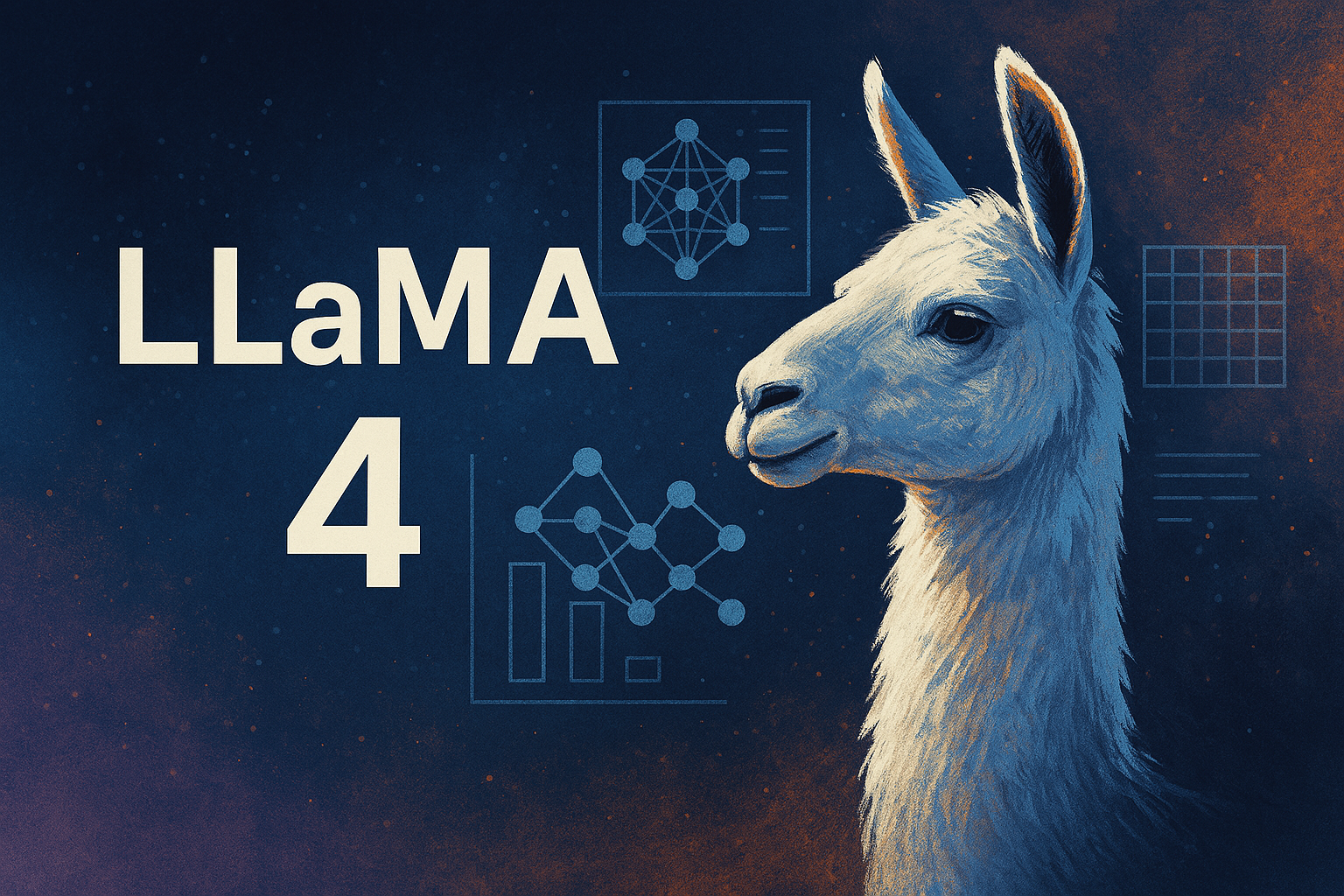A Brief History of LLaMA
Meta’s journey into foundational AI models began with LLaMA 1, which impressed the research community with its performance-to-parameter ratio. The release of LLaMA 2 made waves by going open-weight, offering models with up to 70B parameters and rivaling GPT-3.5.
Now, LLaMA 4 raises the bar again. While the full release details are still evolving, here’s what we know so far.
What’s New in LLaMA 4 ?

Smarter, More Efficient
LLaMA 4 boasts major upgrades in:
- Reasoning & Contextual Understanding: Better logical reasoning, math skills, and fact consistency.
- Efficiency: Trained using techniques like speculative decoding and flash attention for lower latency.
- Longer Context: LLaMA 4 supports extended context windows—ideal for summarizing large documents, handling conversations, or analyzing codebases.
Multilingual Capabilities
One of LLaMA 4’s standout features is multilingual fluency. It significantly outperforms previous LLaMA versions in non-English tasks and benchmarks. This opens doors for:
- Multinational chatbots
- Localized knowledge assistants
- Cross-cultural research applications
Training & Architecture (What We Know)
While Meta hasn’t open-sourced the training code just yet, the model is believed to be:
- Trained on over 15 trillion tokens from high-quality multilingual and domain-specific datasets.
- Optimized with ReLU-family activations, RMSNorm, and sparse Mixture-of-Experts (MoE) in larger variants.
- Built on transformer-based decoder-only architecture, similar to LLaMA 2 and GPT-4.
Benchmarks and Performance
On widely-used benchmarks like MMLU, TruthfulQA, and HumanEval, LLaMA 4 is rumored to score:
| Benchmark | LLaMA 3 (70B) | LLaMA 4 (Estimated) | GPT-4 |
|---|---|---|---|
| MMLU | 69.9% | ~80%+ | 86.4% |
| TruthfulQA | 62% | ~72% | 75% |
| HumanEval (code) | 67% | ~80%+ | 88% |
Note: These are early estimates and unofficial leaks. Always check Meta’s official documentation for confirmation.
Use Cases: Why LLaMA 4 Matters
LLaMA 4 isn’t just for researchers. It’s already seeing real-world applications:
- Enterprise chatbots: With faster inference and better factual grounding.
- Coding assistants: LLaMA 4 excels in code generation and debugging tasks.
- Education tools: Its multilingual skills make it perfect for global tutoring platforms.
- AI research: As an open-weight model, LLaMA 4 provides researchers transparency and control.
Access and Usage
Meta has made LLaMA 4 weights available to researchers, developers, and organizations under a non-commercial license, similar to LLaMA 2. You can access it via:
- Hugging Face
- Meta’s GitHub
- Third-party fine-tuning platforms (e.g., LoRA adapters on Colab)
You’ll need to request access and agree to Meta’s usage policy.
Challenges and Considerations
Like any frontier model, LLaMA 4 isn’t without tradeoffs:
- Compute requirements: Larger variants (e.g., 140B MoE) may require multiple GPUs or specialized infrastructure.
- Bias & hallucination: While improved, LLaMA 4 can still generate biased or incorrect outputs.
- Fine-tuning complexity: Adapting LLaMA 4 for niche use cases requires expertise in prompt engineering or parameter-efficient fine-tuning.
What’s Next?
Meta has hinted at a multi-modal future for LLaMA. We may soon see:
- LLaMA 4 Vision: Image + text models to compete with GPT-4V and Gemini.
- LLaMA 4 Chat: Instruct-tuned models optimized for helpfulness and safety.
- LLaMA APIs: More accessible deployment options through Meta or partners.
Final Thoughts
LLaMA 4 isn’t just another model—it’s a leap forward in open, powerful, and adaptable AI. It empowers developers with cutting-edge capabilities without locking them into closed ecosystems.
Whether you’re building an AI product or just experimenting, LLaMA 4 is well worth exploring.

Leave a Reply